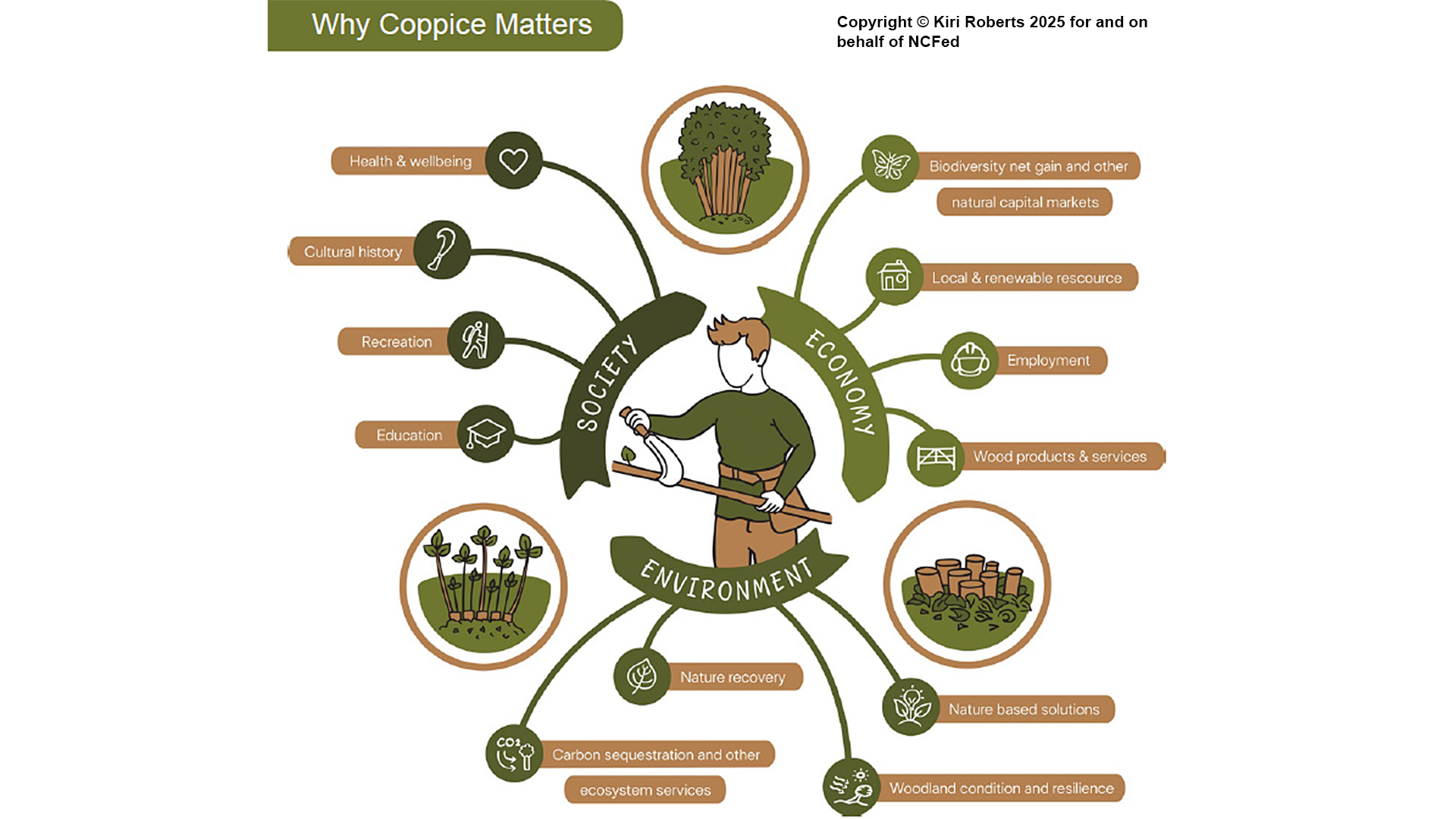
The National Coppice Federation (NCFed) has recently completed its coppice study, the More Coppice Into Productive Management aka the ‘coppice mapping’ project.
Since the outcomes of the Project unlock some of the significant barriers that existed, there has never been a better time for landowners and managers to think about progressing coppice restoration and management.
The Project’s aims and outputs were to:
- Significantly improve the understanding of where coppice woodland is located and its condition and restorability;
- Improve understanding of the barriers to coppice management/restoration;
- Produce a publicly available interactive web-based summary map (subject to consent and GDPR measures);
- Produce coppice management/restoration information resources;
- Produce a final project report to include recommendations for further action and support.
During the project they:
- Surveyed 9,583ha of woodland across 610 sites, of which 7,020ha was identified as coppice not previously recorded in the existing official national dataset (National Forest Inventory 2023 dataset);
- Discovered that this is twice the previously known extent of coppice for the whole of Great Britain in just three regions of England;
- Discovered that the vast majority of coppice recorded during the Project (80%; 5,662ha) is unmanaged and therefore at risk of further decline or disappearing altogether;
- Discovered that most existing coppice seems to occur in Ancient Woodland;
- Discovered that woodland owners and managers collectively experience a wide range of interlinked barriers and requirements specific to them; there is no clear single theme. Therefore any future support needs to be flexible so that it can be tailored to suit their needs.
The following resources are now available to access freely online via their project webpage here:
- Interactive online coppice map;
- Coppice restoration and management information guide for landowners and managers;
- Contact details for the network of Coppice Advisors; and,
- Our main project report which includes the results of our consultation and mapping work.
In addition, the project was instrumental in the new coppice-specific woodland grant (FY6 Restoring Coppice in Woodland) being added to the Countryside Stewardship Higher Tier grant scheme. See here.
NCFed will reflect and learn from both the successes and challenges of the project. In the long term, they hope to conduct further mapping work in the remaining two Forestry Commission regions of England, as well as in Wales, Scotland, Northern Ireland and conduct work on the Forestry England estate; subject to further funding. It would be a huge achievement to gain a comprehensive picture of how much coppice woodland is left in the UK, and in what condition.
Getting more coppice woodland into productive management will increase the availability of good quality coppice material to meet demand and bring many other environmental and social benefits, including increased biodiversity.
To find out more about the project, visit the NCFed website here.

